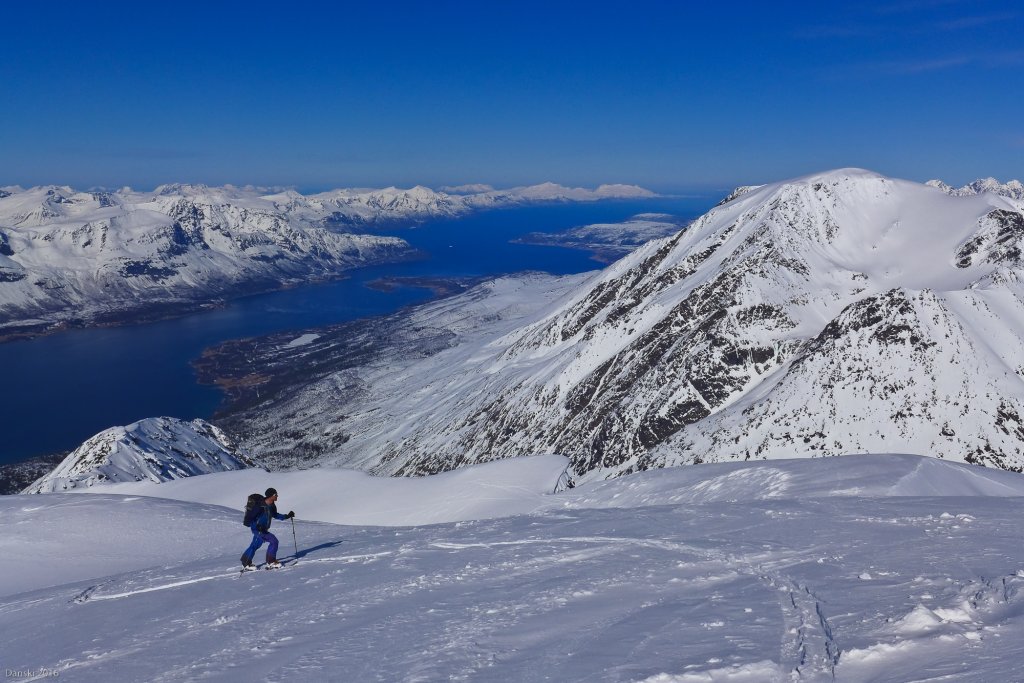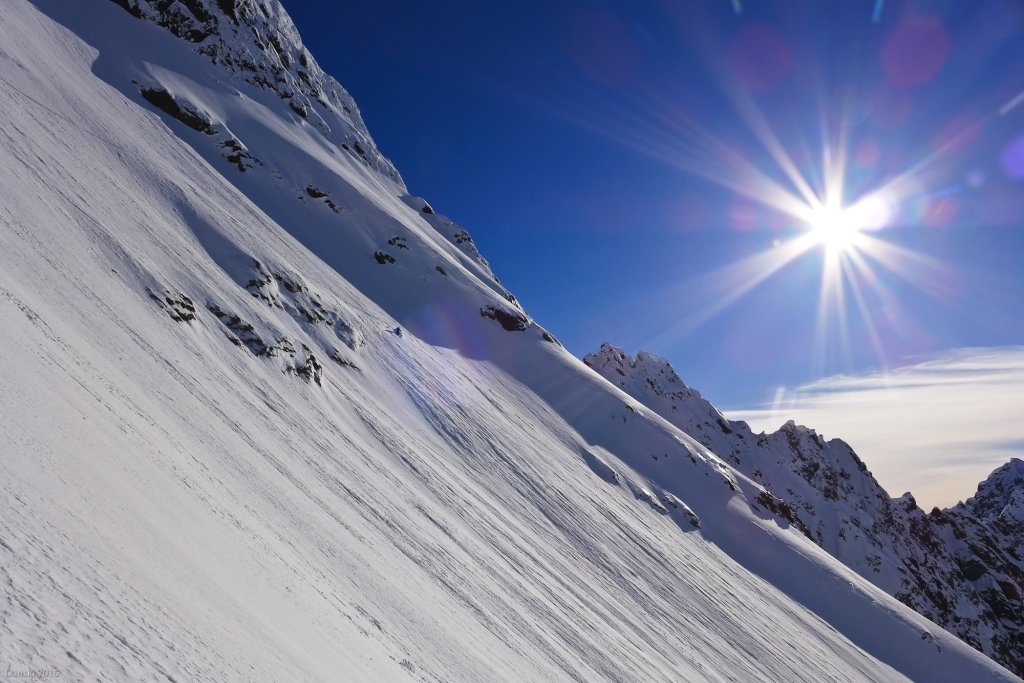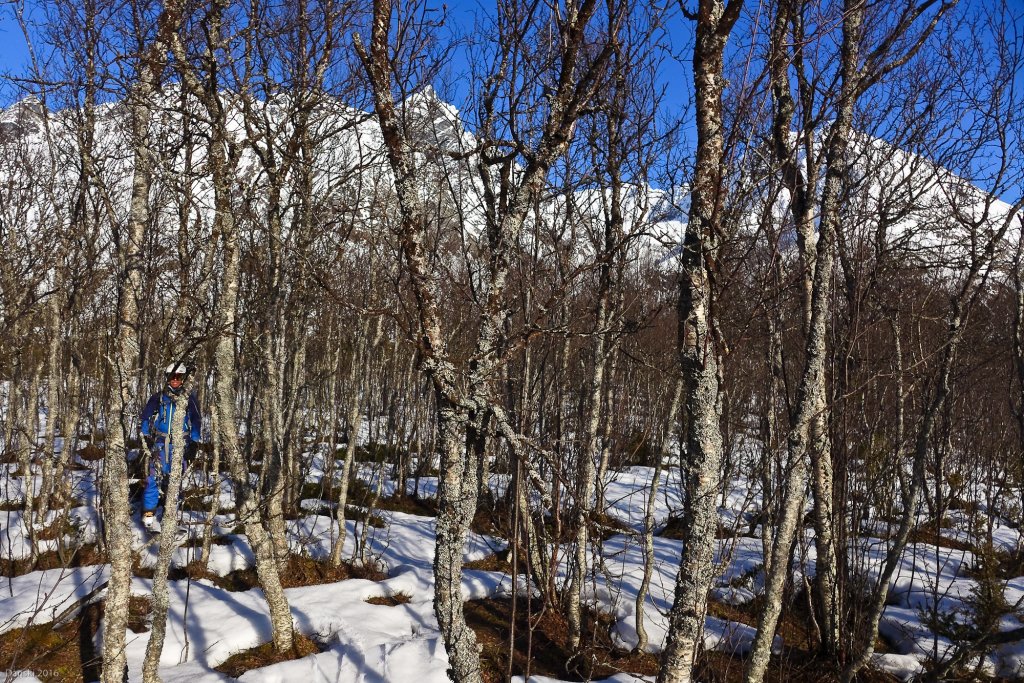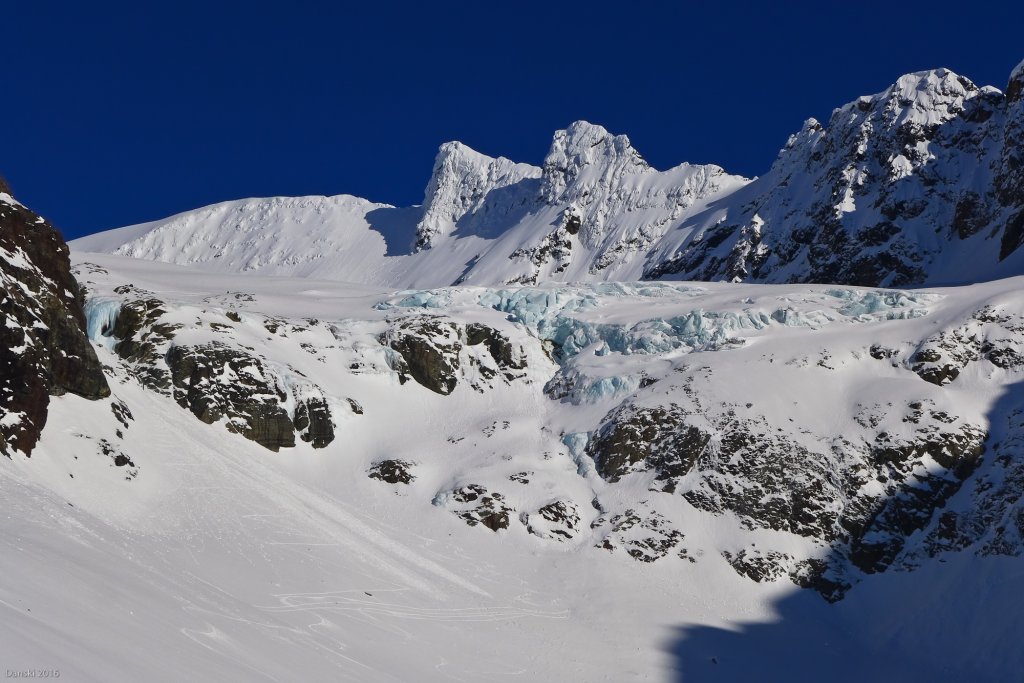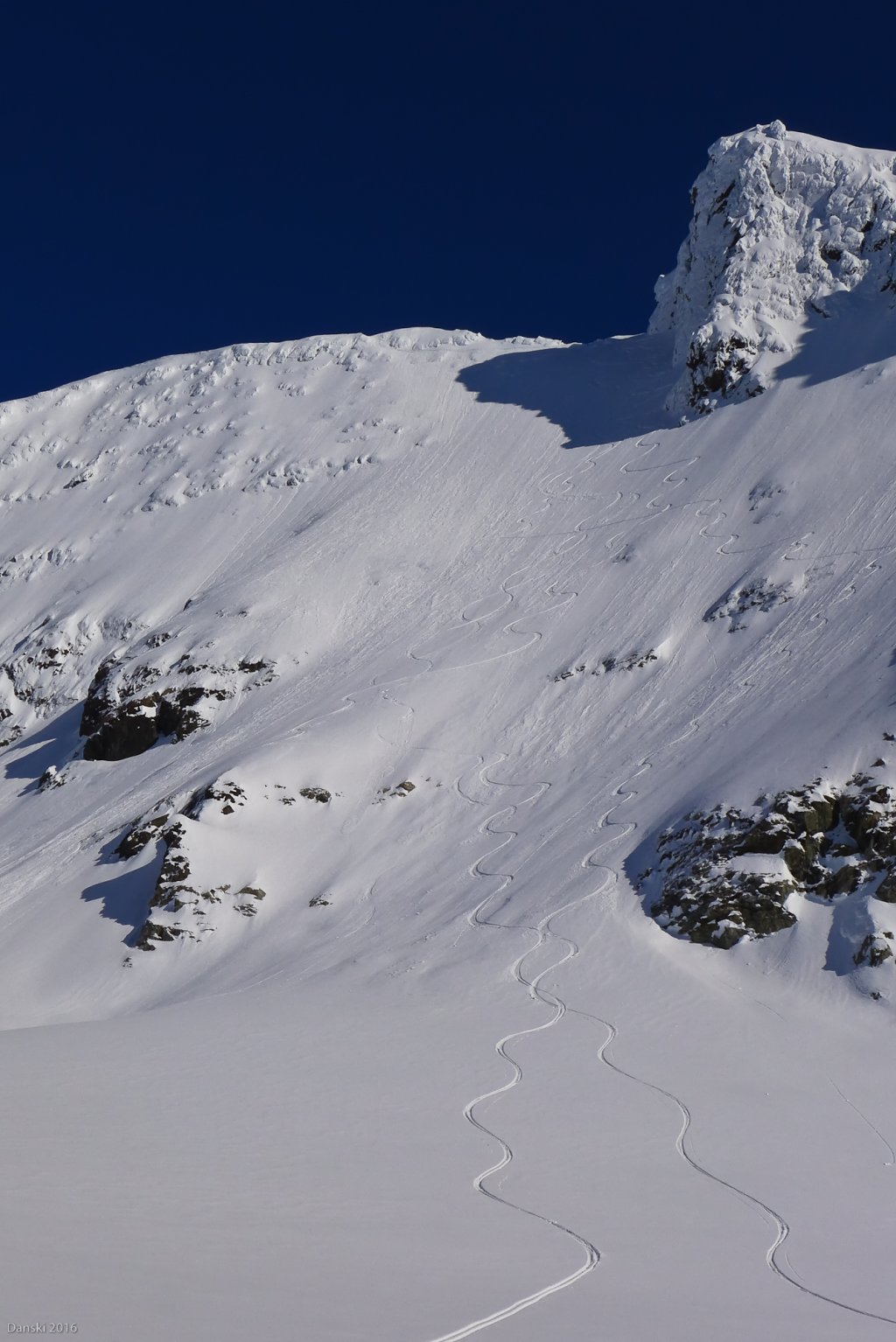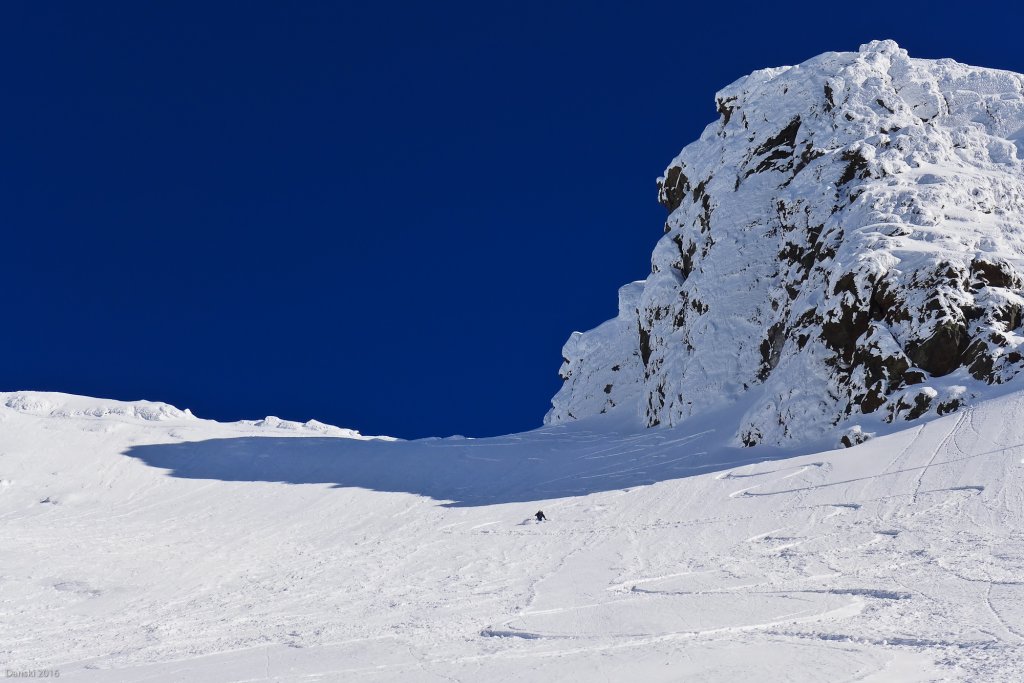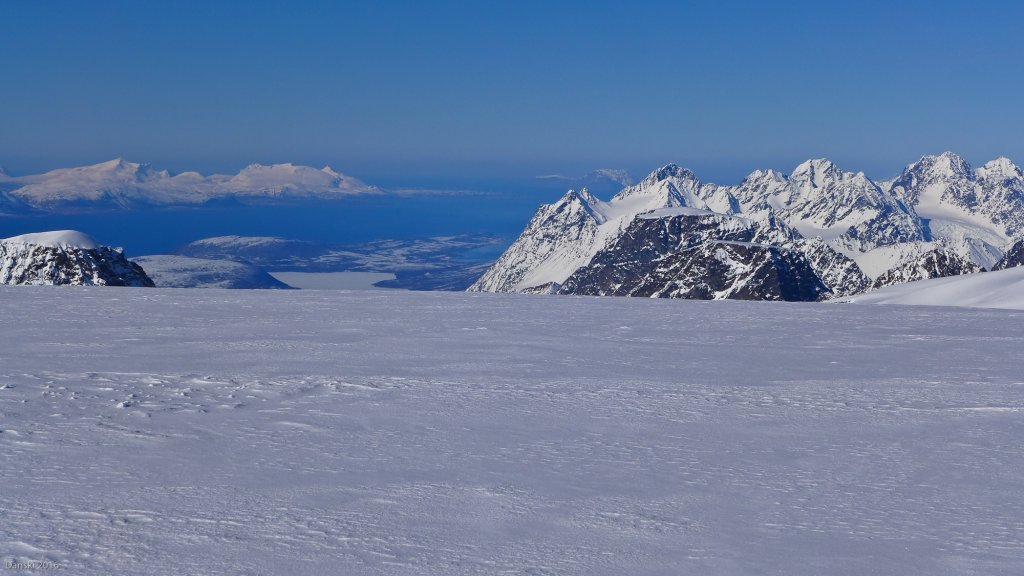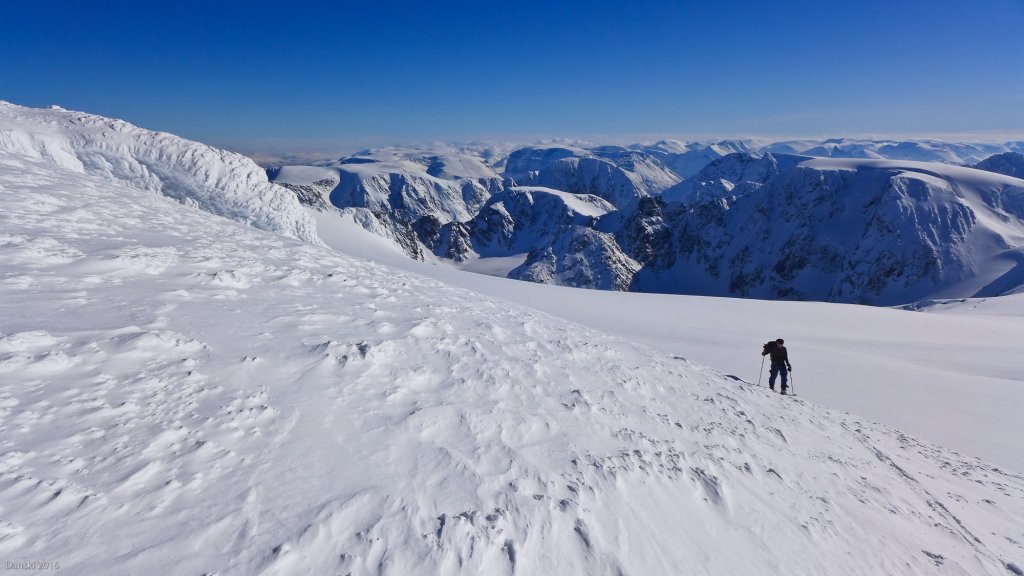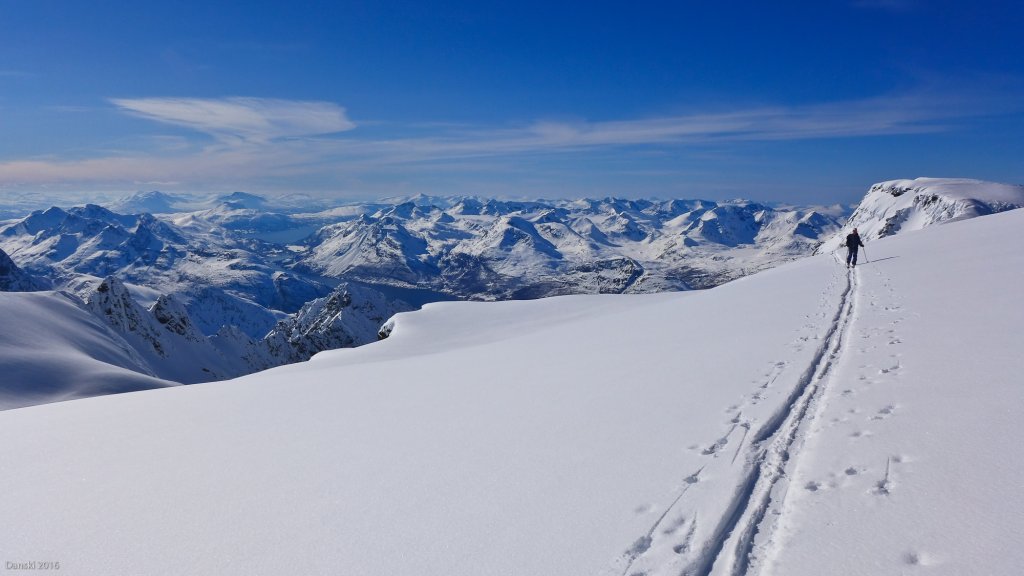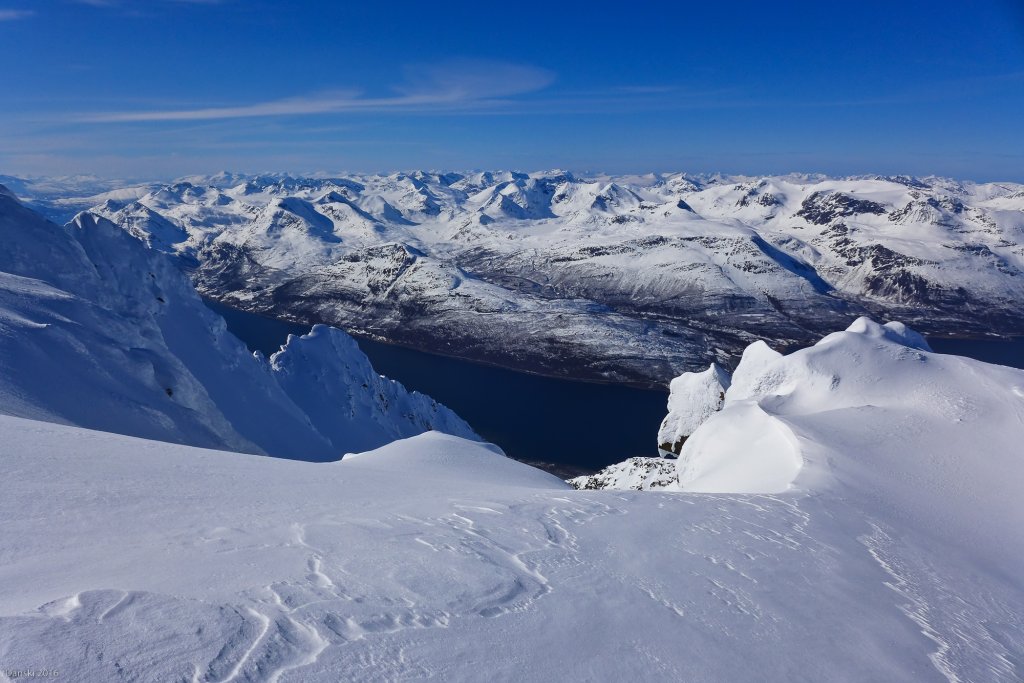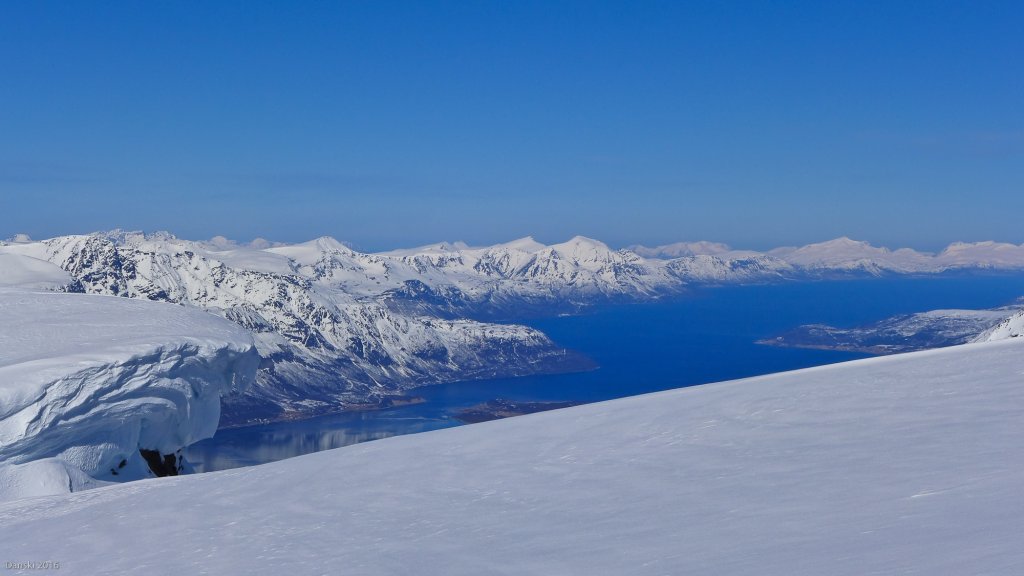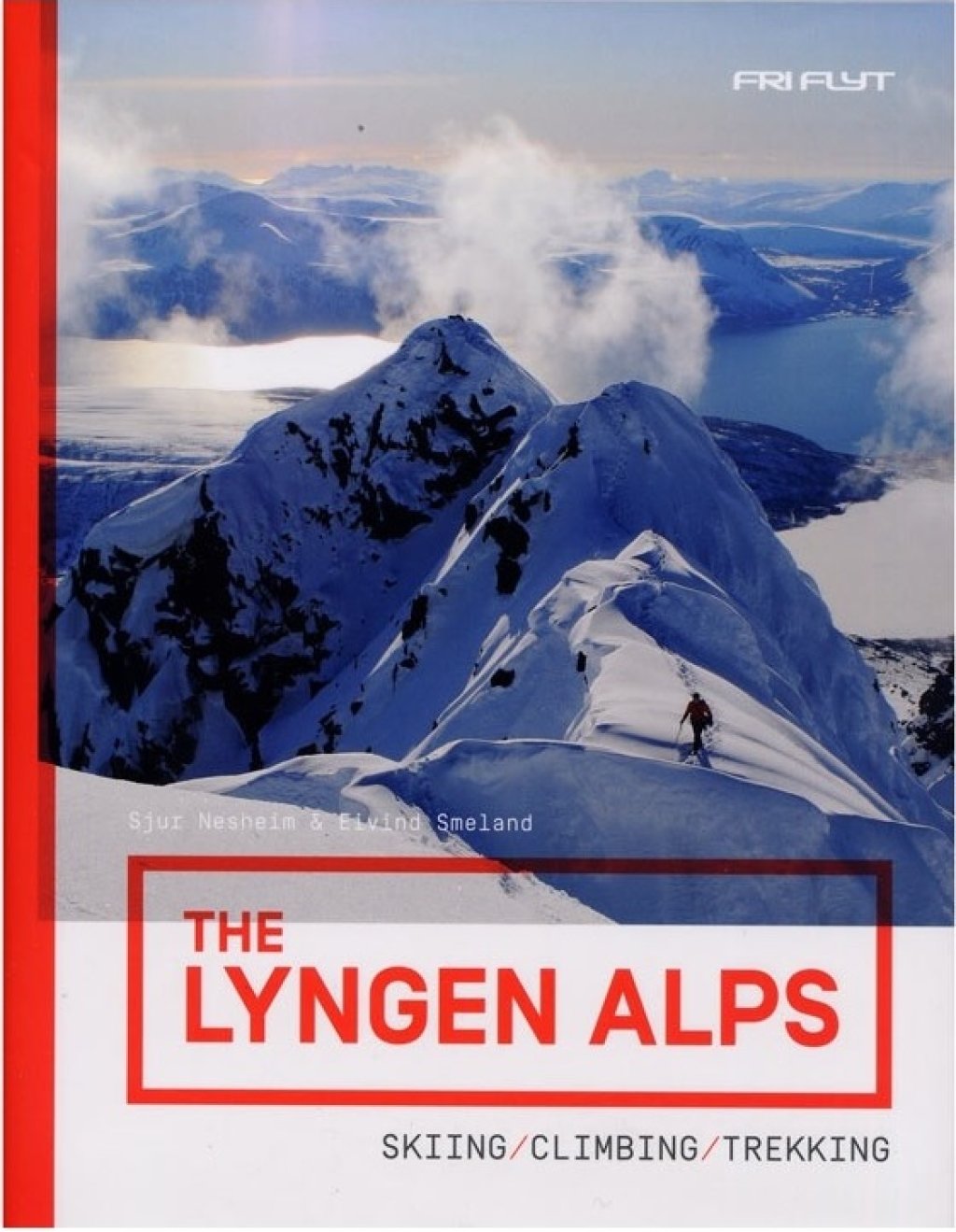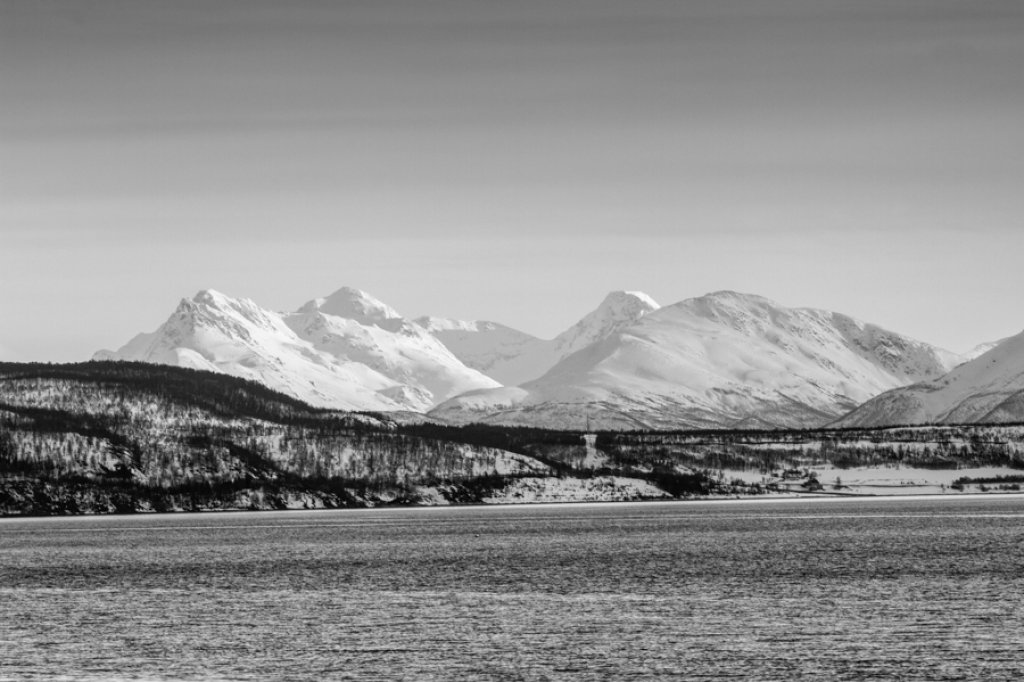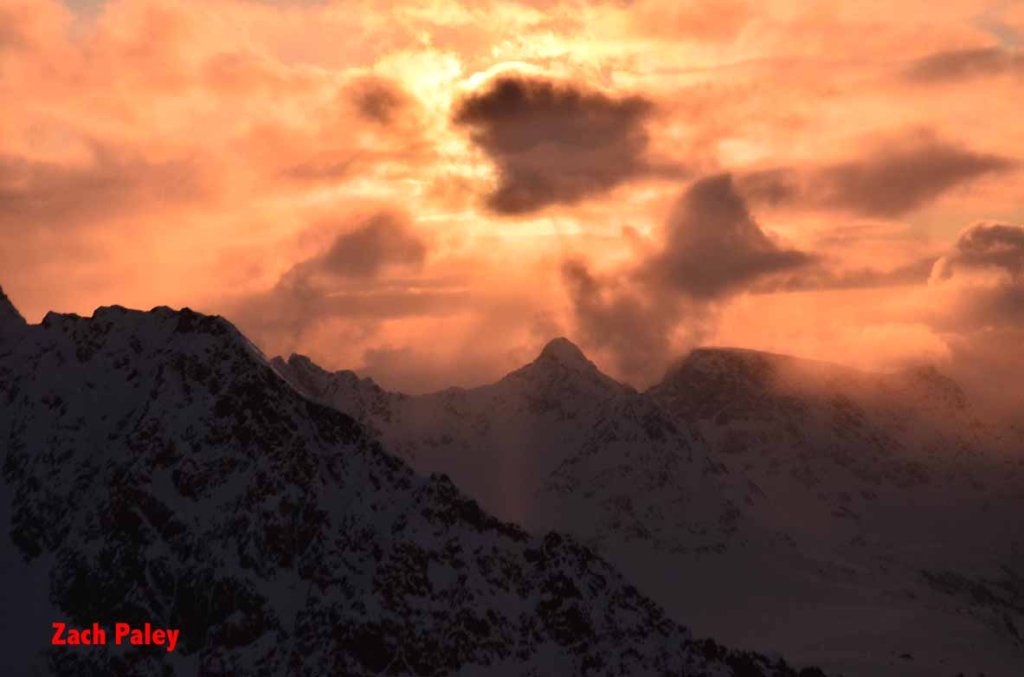From now on, we are constantly on glaciers, which are not extremely crevassed, but still require a certain amount of caution. The first ascent is also the steepest and can be at risk of avalanches if the conditions are right. Once you have reached the height of Holmbuktinden again, the last 200 meters of ascent are barely noticeable towards the extensive summit of Jiekkevárri. No one puts a cross or any other markings on the highest point here, so you have to try to hit Lyngen's high point as accurately as possible using the horizon or GPS. Regardless of whether you miss the summit by 50 cm, the view in all directions is quite overwhelming, although the lack of exposure means there is no classic alpine summit feeling. But it's precisely this summit exoticism that makes it so special! But even on this rather unusual summit, the anticipation of the upcoming descent takes over after a while.
Descent
In order to pick up speed, you have to push hard at the beginning, but once you're going, you cruise over wide, immaculate surfaces that allow for some wide turns despite the flat angle. The character changes abruptly at around 1500m. The entrance to the NW abyss of the Blaisengletscher should be well studied at this point, because depending on the conditions, you may encounter considerable cross-cuts here. For lovers of steep descents, an increasingly narrow ridge is recommended at this point, which leads in a south-westerly direction to P.1510. Here, however, you should be very sure of the conditions and your own ability, as the exposure and the often icy snow on this wind-exposed ridge minimize the margin for error to 0. 400m high and 45° inclined NW slopes lead to the flat Blaisen Glacier exactly below the rock needle P.1510. Both variants merge here. The vertical glacier break is bypassed skier's right. Be careful not to linger too long here, as avalanches regularly thunder out of the south flank of Holmbuktinden as the day warms up. Through the wide valley of the Tverrelva, relaxed skiing with fjord views is the order of the day and, as the cherry on top, you can enjoy a truly magnificent cruise through light bushes and photogenic pines on the last 300 meters of altitude. After 8-10 hours, you finally fight your way through the typically dense birch pole forests before enjoying a "Mack", which was chilled in the morning, and can probably claim to have just successfully completed one of the top 3 Lyngen tours.
Summary
Difficulty: ***** (from *****)
Special dangers: steep, avalanche-prone slopes / diurnal warming / general alpine dangers: Route leads over glaciers
Average / maximum steepness: 20-35° / 45° (steeper variant otherwise 40°)
Exposure: SW-N-NW-W
Altitude start / finish: 10m / 1834m
Altitude meters uphill / downhill: 2000m / 2000m
Duration: 8 - 10 hours total
Best time of year: March to June
Maps/Note: All altitude coordinates and field names refer to the highly recommended app "Norgeskart" and the Turkart "Lyngenhalv" respectively. the map "Lyngenhalvöya Sör", scale 1:50,000 from the publisher "Nordeca"
Note: The PG touring tips are general descriptions of tours that we like subjectively. Our touring tips DO NOT REFER TO CURRENT CONDITIONS. Read the situation report and the weather forecast and plan your tour accordingly.


